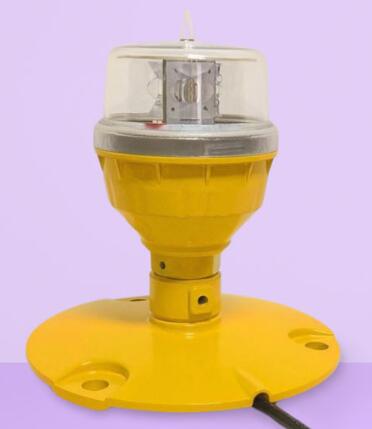Defining Boundaries: The Importance of Helipad Perimeter Lighting in Aviation
In aviation, precision and safety are paramount, particularly when it comes to helicopter operations. Helipad perimeter lighting plays a crucial role in ensuring the safety and efficiency of takeoffs and landings, especially in low-visibility conditions. This specialized lighting system outlines the boundaries of helipads, guiding pilots with clarity and precision. In this article, we explore the significance, components, and considerations of helipad perimeter lighting, as well as its role in advancing aviation safety.
The Role of Helipad Perimeter Lighting
Helipad perimeter lighting is more than just a visual aid; it is a critical safety feature that helps pilots identify and approach landing zones with confidence. Its primary functions include:
Boundary Definition: Clearly marking the edges of the helipad to prevent overruns and ensure safe landings.
Night and Low-Visibility Operations: Providing visibility during nighttime operations, foggy conditions, or adverse weather.
Compliance: Meeting the standards set by aviation authorities to ensure uniformity and safety across helipads worldwide.

Key Components of Helipad Perimeter Lighting
A well-designed helipad perimeter lighting system includes several essential components:
1. Perimeter Lights
These lights are installed around the edges of the helipad to create a defined boundary. They are typically:
LED-Based: Offering energy efficiency, long lifespan, and superior brightness.
Color-Coded: Green lights are often used to signify the perimeter in compliance with aviation standards.
2. Power Source
Perimeter lighting systems can be powered through various means:
Wired Systems: Connected to the grid for reliable operation.
Solar-Powered Options: Ideal for remote or off-grid locations, offering sustainability and independence from external power sources.
3. Control Systems
Modern helipad perimeter lighting includes control systems that allow operators to:
Adjust brightness levels based on environmental conditions.
Synchronize lighting patterns for enhanced pilot visibility.
| Helipad Perimeter Lighting |
| Helipad Perimeter Light |
Monitor system performance remotely.
Benefits of Advanced Helipad Perimeter Lighting
The implementation of advanced helipad perimeter lighting offers numerous benefits:
Enhanced Safety
Clearly defined boundaries reduce the risk of accidents, ensuring that helicopters land and take off within designated zones. This is particularly crucial in emergency situations or challenging environments.
Energy Efficiency
LED-based systems consume significantly less energy compared to traditional lighting, resulting in lower operational costs and reduced environmental impact.
Durability and Reliability
Designed to withstand extreme weather conditions, these lights ensure uninterrupted performance even in harsh environments.
Compliance and Standardization
Meeting international aviation standards, such as those set by the FAA and ICAO, ensures that helipads are safe and accessible for global operations.
Applications of Helipad Perimeter Lighting
Helipad perimeter lighting is used in a variety of settings, each with unique challenges and requirements:
Hospital Helipads: Supporting emergency medical services by enabling safe landings for air ambulances.
Offshore Platforms: Ensuring visibility for helipads on oil rigs, wind farms, and other remote installations.
Urban Rooftops: Facilitating helicopter operations in densely populated areas for corporate or emergency purposes.
Military Bases: Providing robust and reliable lighting for tactical operations in challenging environments.
Considerations for Selecting Helipad Perimeter Lighting
When choosing helipad perimeter lighting, it is essential to consider several factors:
Compliance: Ensure the system adheres to regulatory standards to guarantee safety and uniformity.
Environment: Evaluate the location’s specific conditions, such as weather, terrain, and accessibility.
Power Needs: Decide between wired or solar-powered options based on the availability of grid power.
Cost and Maintenance: Balance the initial investment with long-term benefits, including durability and energy savings.
Future Trends in Helipad Perimeter Lighting
The future of helipad perimeter lighting is driven by technological advancements and a focus on sustainability. Key trends include:
Smart Systems: Integration with IoT technology for real-time monitoring and adaptive control.
Eco-Friendly Materials: Increased use of sustainable materials and manufacturing processes.
Enhanced Visibility: Innovations in LED technology to provide brighter and more efficient lighting solutions.
Automation: Systems that automatically adjust brightness and patterns based on environmental data.
Helipad perimeter lighting is a cornerstone of aviation safety, defining the boundaries of landing zones and guiding pilots with precision. Its significance extends beyond functionality, embodying the industry’s commitment to innovation, efficiency, and safety.
Investing in advanced helipad perimeter lighting not only ensures compliance with regulatory standards but also enhances operational efficiency and sustainability. As technology continues to evolve, these lighting systems will play an even greater role in shaping the future of aviation, providing safer skies for all.
